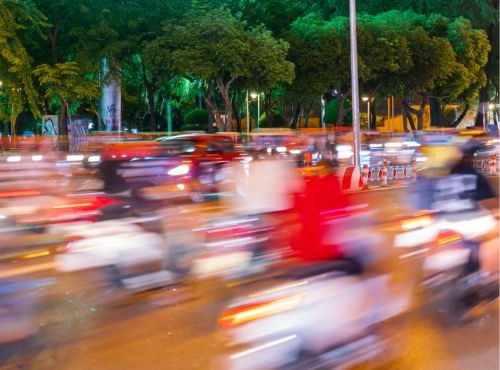
Introduction
Seeing Saigon for the first time didn’t unfold quite as I’d imagined. After a long wait at customs to finalize my visa, the thrill of arriving in Vietnam’s largest city had already dulled. But stepping into the chaotic swirl of Saigon traffic—a sea of motorbikes, honking cars, and frenetic energy—was an instant sensory overload. I thought I’d seen it all after years in China and even a visit to Manila, but Saigon was something else entirely.
Eventually, the initial shock gave way to curiosity and wonder. Walking its streets, navigating its intersections, and adjusting to the buzzing life all around me, I began to see why this city is both exhilarating and unforgettable. There were French colonial landmarks, abundant markets, aromatic street food, and the festive energy of Tết. Saigon offered me a journey like no other. It was a trip that would stay with me long after my flight back to China and what would become a three-year lockdown due to COVID.
In this post, I’ll take you through some of the city’s most iconic sights, including the elegant Saigon Central Post Office and Notre Dame Cathedral, the bustling Ben Thanh Market, and the historic Independence Palace. I’ll share my experience of celebrating Tết, the Vietnamese New Year, on Nguyen Hue Street, where the city’s festive spirit comes alive. And, of course, we’ll explore some of Saigon’s delicious culinary offerings, from steaming bowls of phở to the irresistible crunch of a bánh mì. Whether you’re planning your own trip or simply curious about this fascinating city, join me as we dive into the highlights of Saigon, one of Southeast Asia’s most dynamic destinations.
Section I: Locating Saigon—Geography and Vibrancy
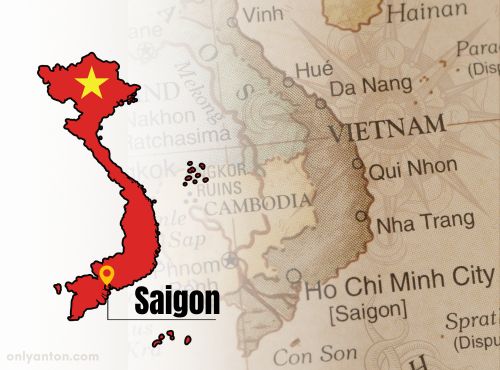
Vietnam, a long, S-shaped country in Southeast Asia, stretches along the eastern edge of the Indochinese Peninsula. With its coastline bordering the South China Sea and a landscape that transitions from rugged mountains in the north to fertile plains in the south, Vietnam boasts a geography as diverse as its culture. To its west, it shares borders with Laos and Cambodia, while its northern boundary meets China. This dynamic region is renowned for its rich traditions, crowded cities, and a blend of ancient heritage and modern vitality that captivates travellers from around the world.
In the heart of southern Vietnam lies Saigon. Officially known as Ho Chi Minh City, this is the country’s largest metropolis and economic powerhouse. Saigon was once the capital of French Indochina and later of South Vietnam. The city has long been a hub of commerce, culture, and innovation. While Hanoi, Vietnam’s northern capital, is steeped in political history and traditional charm, Saigon embodies the country’s dynamic, forward-looking spirit. The dual names “Saigon” and “Ho Chi Minh City” reflect the city’s layered identity. The official name, “Ho Chi Minh City,” was adopted in 1976 after the Vietnam War. The name “Saigon” is still widely used by locals and visitors alike, particularly to refer to the central urban districts. Both names are accepted, offering a glimpse into the blend of historical reverence and modern practicality that defines the city.
Geography
Geographically, Saigon is shaped by its proximity to the Saigon River, which meanders through the city, and the sprawling Mekong Delta to the south. This lush delta region, known as the “rice bowl” of Vietnam, supports vibrant agricultural activity and adds to the city’s lifeblood. The river itself has been integral to Saigon’s growth. The waterway serves as a gateway for trade and a scenic backdrop for its urban life. These natural features underscore Saigon’s identity as a thriving, interconnected city with deep cultural and geographical roots.
Section II: Saigon Through Time—A Brief History
Saigon’s rich history spans centuries. It is a city shaped by dynasties, colonial powers, war, and modernization. From its early beginnings to its status as Vietnam’s largest metropolis, the city’s story is one of resilience and transformation.
Dynastic Period
The city’s origins trace back to the early Vietnamese dynasties and influences from neighbouring China. Long before Saigon emerged as a busy metropolis, it was part of the Khmer Empire. During its early days as a fishing and trading port, Cambodians called it Prey Nokor. Over time, Vietnamese settlers moved south, incorporating the region into what is now Vietnam during the Nguyen Dynasty. Chinese cultural influences are evident in architectural styles, language, and traditions. These various influences became deeply rooted in the area, creating a unique blend of cultures that remains visible today.
Colonial Period
The French colonization of Vietnam in the 19th century marked a pivotal chapter in Saigon’s history. Under French rule, Saigon became an important city in French Indochina known as the “Pearl of the Orient.” The colonial era left an indelible mark on the city’s architecture. French influence can be seen in the grand boulevards, stately government buildings, and landmarks like Notre Dame Cathedral and the Saigon Central Post Office. French culture also impacted the city’s cuisine. Staples like bánh mì and phở showcase a fusion of French and Vietnamese flavours. Saigon’s status as a cosmopolitan hub during this time laid the groundwork for its enduring vibrancy.
Vietnam War Era
The Vietnam War left a more sombre legacy in Saigon. As the capital of South Vietnam, Saigon was at the heart of the conflict. The city witnessed pivotal moments like the Fall of Saigon in 1975, which marked the end of the war and the reunification of Vietnam. Sites like Independence Palace, where the North Vietnamese tanks broke through on that historic day, serve as poignant reminders of the city’s turbulent past.
Communist Era to Present
In the modern era, Saigon embodies Vietnam’s resilience. Under Communist rule, the city was officially renamed Ho Chi Minh City. Communist governance coexists with rapid urbanization and globalization as the city transforms into an economic powerhouse. Skyscrapers rise alongside colonial-era buildings. Traditional markets thrive amid modern shopping malls. Saigon’s dynamic evolution reflects Vietnam’s broader journey of preserving its heritage while embracing the future.
Section III: Exploring Saigon—Iconic Sights and Experiences
Saigon offers an incredible array of sights that blend history, culture, and everyday life, making it a city like no other. Walking through its streets is a journey through time, from grand colonial landmarks and remnants of a turbulent past to vibrant, living marketplaces. Here are some of the must-see highlights for visiting this dynamic city.
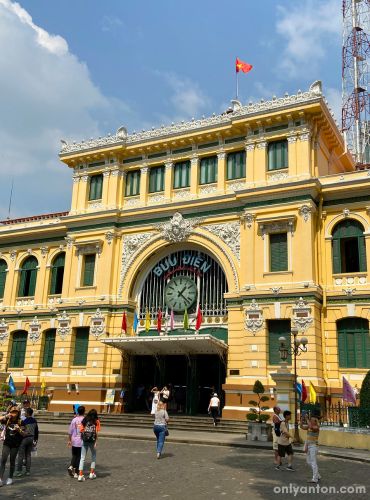
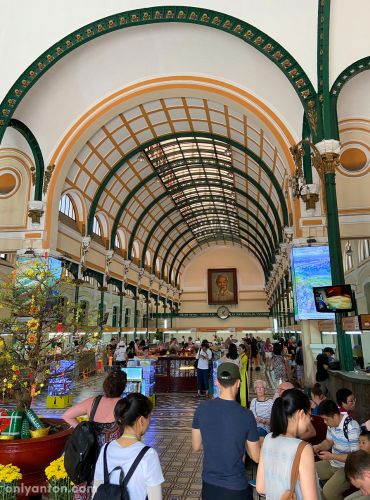
Saigon Central Post Office
The Saigon Central Post Office is a masterpiece of colonial architecture. The building was designed by Gustave Eiffel, the famed architect behind the Eiffel Tower. With its striking yellow façade, arched windows, and intricate detailing, the building exudes elegance and charm. Inside, the high vaulted ceilings, antique telephone booths, and historic maps evoke the grandeur of its past. Despite being over a century old, the post office remains a functioning hub of activity. Visitors are allowed to send postcards from one of Vietnam’s most iconic buildings.
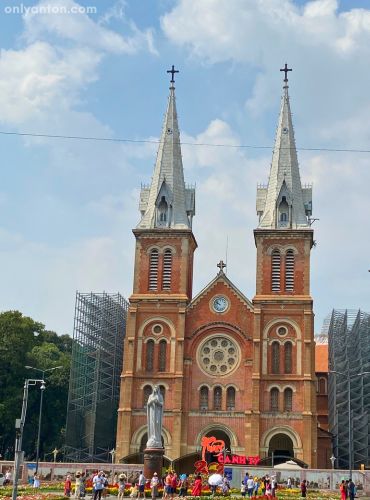
Notre Dame Cathedral
A short walk away stands the Notre Dame Cathedral, another testament to Saigon’s French colonial legacy. This red-brick cathedral, built in the late 19th century, is a tranquil oasis amid the city’s hustle and bustle. Its twin bell towers, stained glass windows, and stately interior reflect the architectural grandeur of the period. Although the cathedral is currently undergoing restoration, it remains a symbol of Saigon’s cultural and spiritual history.
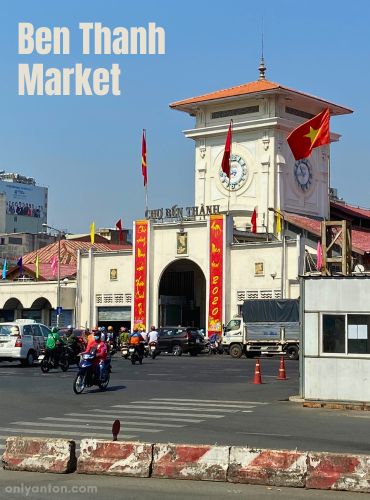
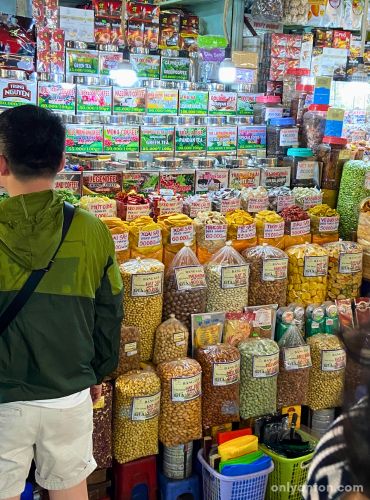
Ben Thanh Market
For a taste of Saigon’s vibrant everyday life, head to Ben Thanh Market. It is one of the city’s oldest and most famous markets. The place brims with energy as vendors offer everything from colourful textiles and handicrafts to aromatic spices and fresh produce. It’s the perfect place to shop for souvenirs, sample local delicacies, or immerse yourself in the lively atmosphere. Haggling is part of the experience, so be prepared to negotiate for the best deals.
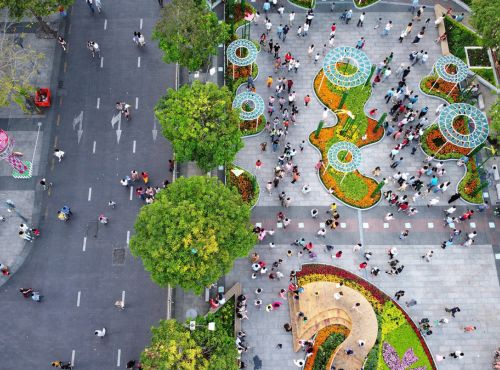

Nguyen Hue Street and City Hall
Stroll along Nguyen Hue Street, a pedestrian promenade that runs between the Saigon River and the historic City Hall. Lined with cafés, shops, and modern high-rises, Nguyen Hue Street offers a fascinating mix of old and new. At one end sits the elegant City Hall, a colonial-era building with ornate detailing. The edifice serves as a striking reminder of the city’s French past. The street comes alive at night. Lights, music, and a festive atmosphere make it a favourite gathering spot for locals and tourists alike.
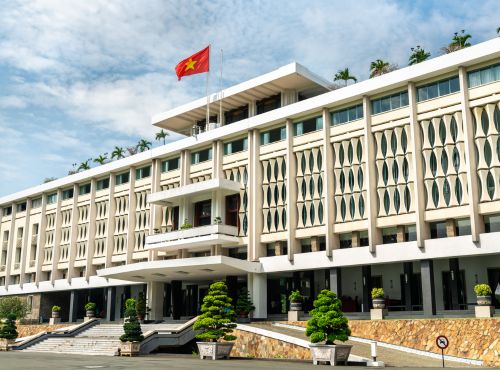
Independence Palace
The Independence Palace, also known as the Reunification Hall, is a must-visit for history enthusiasts. This mid-20th-century building was the residence and workplace of the president of South Vietnam. The building played a pivotal role in the Vietnam War. Visitors can explore its preserved meeting rooms and underground bunkers. The iconic rooftop is where a North Vietnamese tank symbolically ended the war in 1975. The palace’s modernist architecture, with its clean lines and spacious courtyards, is as striking as its historical significance.
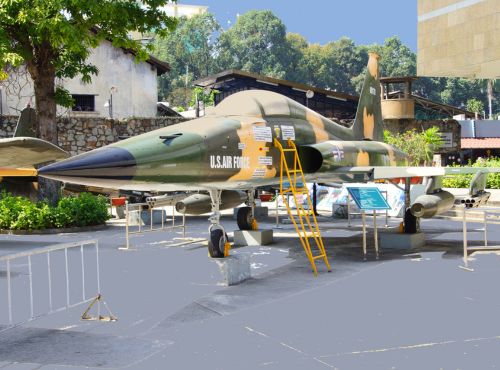
Vietnam War Sites
While these landmarks are highlights of Saigon, there are other sites that may interest travellers. For those who are particularly keen on Vietnam War history, the War Remnants Museum offers a sobering look at the impact of the Vietnam War. Exhibits include photographs, documents, and military equipment. Meanwhile, the Cu Chi Tunnels, located just outside the city, provide insight into the ingenuity and resilience of Vietnamese soldiers during the war. Although I didn’t visit these sites personally, they are highly recommended for those seeking a deeper understanding of the country’s history.
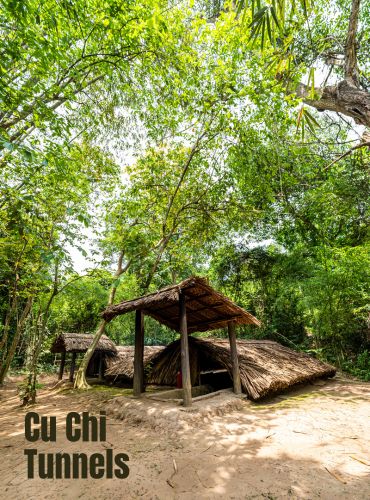
Saigon’s iconic sights offer a glimpse into the city’s vibrant culture and storied past, making it a destination that leaves a lasting impression on all who visit.
Section IV: Culinary Highlights of Saigon
Saigon’s street food scene is nothing short of legendary. The city pulses with vibrant flavours, tantalizing aromas, and the constant hum of street vendors preparing fresh dishes at all hours. From crowded markets to quiet alleyways, every corner of Saigon offers a culinary adventure waiting to be savoured. Whether sitting at a packed stall or perched on a tiny plastic stool, the experience of eating in Saigon is as memorable as the food itself.
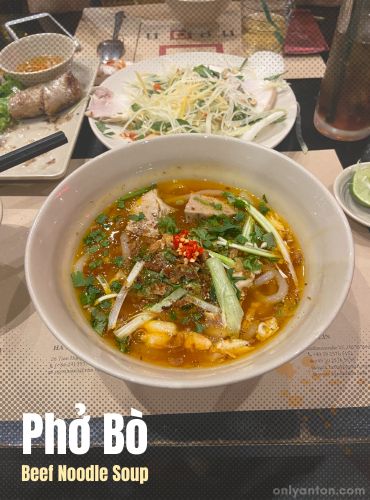
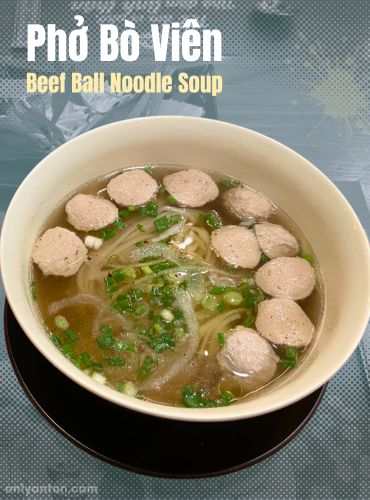
Noodle Soup (Phở)
No discussion of Vietnamese cuisine is complete without phở, the country’s iconic noodle soup. In Saigon, the southern-style phở is a symphony of flavours. A rich, aromatic broth is served over rice noodles and topped with fresh herbs like Thai basil and cilantro. I’ll never forget my bowl of phở bò—tender slices of beef floating in a fragrant broth, accompanied by a plate of bean sprouts, lime wedges, and chilli to customize each bite. Another standout was phở bò viên, featuring springy beef meatballs that added a satisfying texture. Whether from a humble street vendor or a chain like Pho 24 on Pasteur Street, phở is a must-try dish that exemplifies the heart of Vietnamese cooking.
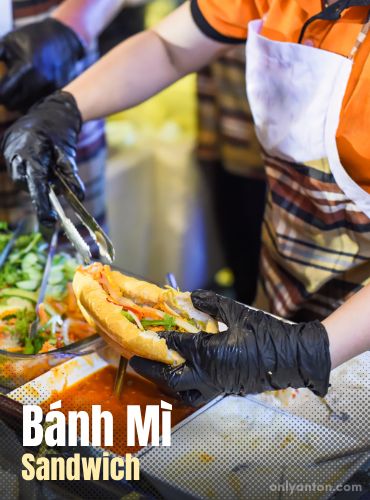
Sandwich (Bánh Mì)
Another staple of Saigon’s food scene is the bánh mì. It is a testament to Vietnam’s unique blend of French and Vietnamese culinary traditions. This sandwich is built on a crispy yet airy baguette. The bread is then stuffed with an assortment of fillings like pâté, cold cuts, pickled vegetables, fresh cilantro, and chilli. The combination of textures and flavours—crunchy bread, tangy pickles, and savoury meats—is a perfect marriage of East and West. Vendors across the city, from street carts to small shops, serve up this beloved snack. It is an easy and delicious choice for travellers on the go.
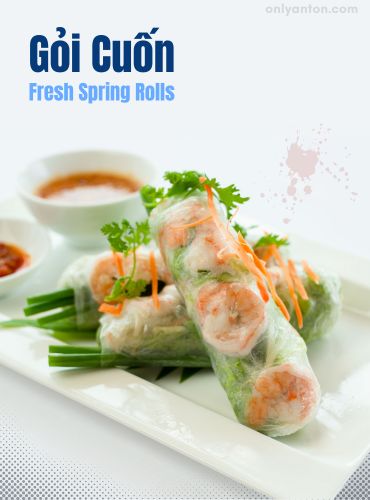
Spring Rolls
For something lighter but equally flavourful, try the spring rolls. There are two main varieties: gỏi cuốn and chả giò. The fresh gỏi cuốn are translucent rice paper rolls filled with shrimp, pork, herbs, and vermicelli noodles, served with a savoury peanut dipping sauce. On the other hand, chả giò are fried spring rolls, golden and crispy, filled with minced pork, vegetables, and sometimes glass noodles. Both are simple yet irresistible, highlighting Vietnam’s knack for combining fresh ingredients with bold flavours.

Vietnamese Coffee
There’s nothing quite like cà phê đá, Vietnamese iced coffee to wash it all down. The drink is made with coarsely ground robusta beans brewed through a metal drip filter. The coffee is strong, rich, and sweetened with condensed milk before being poured over ice. I found it impossible to walk far in Saigon without succumbing to the lure of a coffee stall, where locals gather for a quick pick-me-up. Whether sipped on a sidewalk or in a cozy café, Vietnamese coffee is a delightful ritual that fuels the city’s frenetic pace.
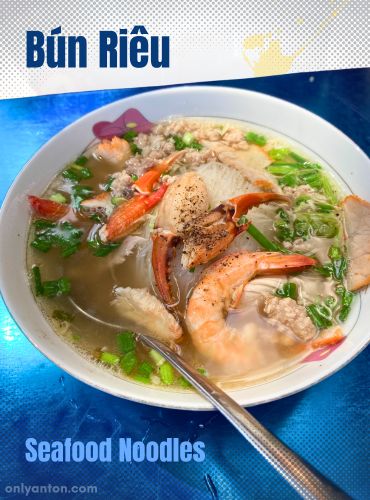
Seafood Noodle Soup
One of my most unforgettable meals in Saigon came at a tiny, unassuming spot near M Hotel Saigon. A hole-in-the-wall restaurant serves a seafood phở that was nothing short of extraordinary. I sat outside on a small plastic stool, barely confident it would hold me, at an equally small table perched on the sidewalk. The soup arrived steaming hot, a fragrant broth brimming with crab, shrimp, and fresh herbs. The flavours were delicate yet rich. The setting—surrounded by the hum of scooters and the chatter of the street—made the experience unforgettable. It was a perfect example of the magic of Saigon’s food culture: unpretentious, authentic, and utterly delicious.
In Saigon, food isn’t just a meal—it’s an adventure. Each dish tells a story of tradition, history, and the city’s personality, leaving you with memories as rich and flavourful as the cuisine itself.
Section V: Celebrating Tết in Saigon
Tết, or the Vietnamese New Year, is the most important celebration in Vietnam. According to the lunar calendar, it marks the arrival of spring. This festive period is steeped in tradition and cultural significance. It is a time for family reunions, honouring ancestors, and embracing hopes for prosperity and good fortune in the year ahead. For visitors, experiencing Tết in Saigon is an unforgettable glimpse into the heart of Vietnamese culture, where the city comes alive with colour, energy, and celebration.
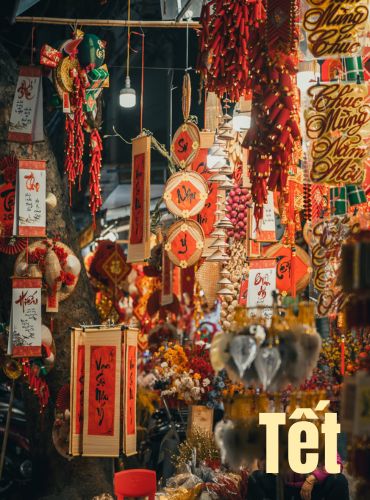
Celebrations
During my visit to Saigon, I was fortunate to be there during Tết and experienced the festivities on Nguyen Hue Street, the city’s animated pedestrian promenade. Colourful displays of flowers, traditional art installations, and live performances transformed the street. Families strolled along the walkway, dressed in their finest clothes, while children laughed and posed for photos amidst the colourful blooms. The tantalizing aroma of street food filled the air as vendors offered delicacies like bánh tét (sticky rice cakes) and freshly grilled meats. The sense of joy and community was palpable, creating a festive and deeply moving atmosphere.
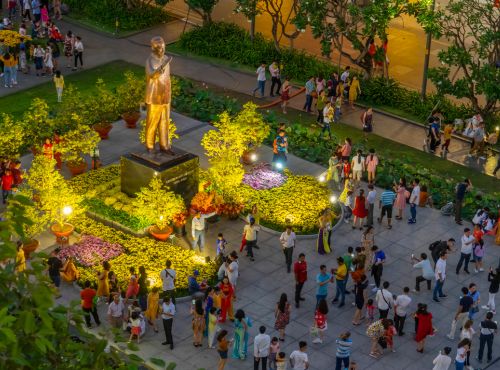
Traditions
The traditions of Tết are rooted in preparation and symbolism, with every detail carefully considered to usher in good fortune. In the weeks leading up to the New Year, households clean their homes to sweep away bad luck and decorate with kumquat trees, peach blossoms, and red envelopes symbolizing prosperity. To honour their ancestors, families prepare special dishes, such as bánh chưng (square sticky rice cakes) and pickled vegetables. The first day of Tết is particularly meaningful, as it sets the tone for the coming year. People exchange greetings, give lucky money to children and the elderly, and visit temples to pray for blessings.

Personal Note
One of the most memorable aspects of my Tết experience was the incredible hospitality of the staff at M Hotel Saigon, who went out of their way to ensure we felt part of the celebration. They graciously loaned my travel companion a traditional áo dài, a flowing and elegant outfit worn on special occasions. Watching her blend seamlessly into the sea of families dressed in their holiday best was a touching reminder of the warmth and generosity of Vietnamese culture. Their kindness made the experience all the more meaningful, turning a simple walk through Nguyen Hue Street into a cherished memory.
Celebrating Tết in Saigon is more than just a holiday. It’s an immersion into the soul of Vietnam. The blend of ancient traditions, modern festivities, and the city’s unyielding spirit creates an experience that lingers long after the celebration ends. For those lucky enough to visit during this time, Tết offers a rare and beautiful connection to the culture and life of Vietnam.
Section VI: Practical Tips for Exploring Saigon
Exploring Saigon is a rewarding adventure, but navigating its lively streets and cultural nuances is easier with a few practical tips in mind. From choosing the best time to visit to understanding local customs, these insights will help you make the most of your trip.

Getting Around
Saigon is a sprawling metropolis. Getting around can be an adventure in itself. Walking is a great way to explore the city’s central districts, especially in areas like Nguyen Hue Street, where pedestrians have priority. However, be prepared for the organized chaos of crossing streets. Motorbikes rarely stop, but locals expect pedestrians to move confidently at a steady pace. Motorbike taxis (xe ôm) and ride-hailing apps like Grab are convenient and affordable options for longer distances. If motorbikes aren’t your style, traditional taxis are widely available, though it’s best to stick with reputable companies like Mai Linh or Vinasun to avoid inflated fares.
Best Times to Visit Saigon
The ideal time to visit Saigon is during the dry season, which runs from December to April. These months offer pleasant weather with lower humidity, making it easier to explore the city’s sights and enjoy outdoor activities. January and February are particularly special as they coincide with Tết, the Vietnamese New Year, when festive decorations and vibrant celebrations adorn the city. If you prefer a quieter experience, visiting just after Tết offers a unique glimpse into the post-festival calm. Avoid the rainy season from May to November, when heavy downpours and occasional flooding can disrupt travel plans.
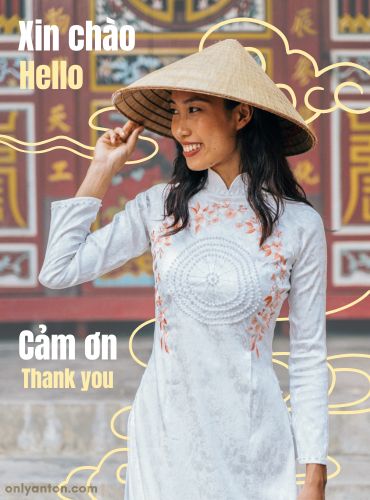
Cultural Etiquette
Interacting with locals is one of the highlights of visiting Saigon, and showing respect for Vietnamese customs goes a long way in making connections. Always greet people with a smile and use “Xin chào” (hello) or “Cảm ơn” (thank you) when appropriate. Dress modestly when visiting religious sites, covering shoulders and knees, and remove your shoes before entering temples or homes. Avoid sticking chopsticks upright in a bowl of rice when dining, as this resembles an offering to the deceased. Finally, while bargaining is common in markets like Ben Thanh, it’s best to do so politely and with a sense of humour.
Saigon rewards the curious and respectful traveller with its thrumming streets, warm hospitality, and rich cultural heritage. Armed with these tips, you’re ready to experience the energy and charm of this unforgettable destination.
Conclusion
Saigon is a city of contrasts and energy, where history and modernity collide in the most captivating ways. From iconic landmarks like the Saigon Central Post Office and Notre Dame Cathedral to the animated atmosphere of Ben Thanh Market and the colourful festivities of Tết, every corner of Saigon offers a story to tell. Its culinary delights, from the comforting warmth of phở to the crisp perfection of bánh mì, are a testament to its enduring cultural blend. Whether you’re marvelling at French colonial architecture or weaving through the hum of motorbikes, Saigon is a destination that leaves an indelible mark on all who visit.
If you ever have the chance to experience Saigon for yourself, don’t hesitate. Its chaotic streets, warm hospitality, and unforgettable flavours await exploration. Saigon isn’t just a place you visit—it’s a city you feel, live, and remember long after you’ve left.
What About You?
Have you been to Saigon, or is it on your travel list? What were your favourite places, or what unexpected experiences did you have in this exciting city? Did you try something unique, like a hidden café or a local festival?
I’d love to hear your stories and recommendations. Share your thoughts in the comments and inspire others to explore this incredible city. And if you’re curious about other destinations in Asia, check out more posts on the Only Anton travel blog for travel tips, cultural insights, and unforgettable adventures. Let’s keep the conversation going!
Further Reading and Resources
Related Posts
Explore more destinations in Southeast Asia and beyond with these related posts on the Only Anton travel blog:
- Kuala Lumpur: A City of Contrasts: Uncover the best things to see, do, and eat in Kuala Lumpur, from iconic landmarks to delicious street food and cultural festivals.
- Exploring Boracay: A Jewel of the Philippines: Find out why Boracay is a must-visit destination. Learn about attractions, hidden gems, and local cuisine in this comprehensive travel guide.
- Discover Hong Kong: Best Things to See and Do: Discover Hong Kong’s iconic landmarks, natural beauty, vibrant districts, cultural sites, and delicious food.
External Resources
These resources provide a mix of practical travel information, historical context, and cultural depth to enhance your understanding and enjoyment of Saigon and Vietnam.
Books
- Saigon: An Epic Novel of Vietnam by Anthony Grey (2018): A historical novel originally published in 1982 that provides insight into Vietnam’s history and culture through a gripping narrative. Find it at your library, browse online, or grab your own copy here.
- The Quiet American by Graham Greene (2004): A classic novel from 1955 that captures the complexities of Saigon during the First Indochina War. Check your local library, search online, or order a copy right here.
- When Heaven and Earth Changed Places by Le Ly Hayslip (1989): A memoir offering a personal perspective on Vietnamese culture and the lasting impacts of the Vietnam War. Locate it at a library, check online options, or purchase it here.
Travel Guides and Articles
- Lonely Planet: Vietnam Travel Guide: Comprehensive advice on Vietnam, including Saigon, with tips on where to go, what to see, and how to experience the local culture.
- Vietnam Tourism Official Website: The official travel portal for Vietnam, offering updated information on events, attractions, and travel tips.
- Vietnam Tourism Guide to Ho Chi Minh City
- Saigoneer: A great resource for local news, events, and cultural stories in Saigon.
- TripAdvisor: Things to Do in Ho Chi Minh City: Advice, recommendations, and reviews on the top attractions in Saigon.




